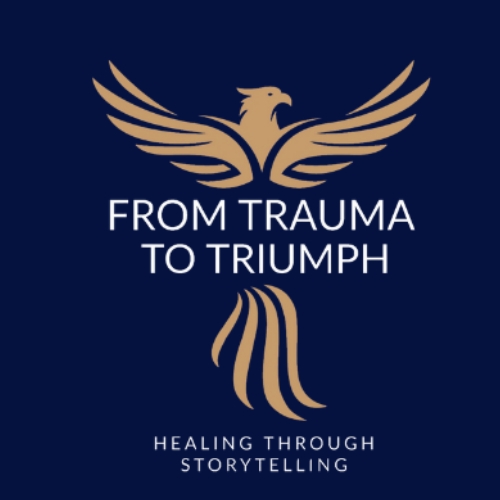Stress is one of the most common challenges of modern life. From work demands and financial pressures to health concerns and personal responsibilities, stress can feel unavoidable. While a certain level of stress can motivate us, chronic stress has serious consequences for physical and mental well-being. That is why it is important to explore effective treatments and therapies that reduce its negative impact.
This article provides A Guide to Different Types of Stress Therapy to help you understand the variety of approaches available today, including insights into Viagra for men price in UAE. Each therapy has its own strengths, benefits, and focus areas. By exploring these options, you will be able to choose the right method for your lifestyle and needs.
Understanding Stress and Its Impact
Stress is a natural response to challenging situations. The body releases hormones like adrenaline and cortisol, which prepare us for a “fight-or-flight” reaction. In short bursts, this reaction can help us perform better. However, when stress becomes chronic, it affects sleep, weakens the immune system, and contributes to conditions like anxiety, depression, high blood pressure, and heart disease.
Because of these risks, stress management is not a luxury—it is essential. Stress therapy provides structured ways to cope, whether through psychological counseling, physical activity, relaxation techniques, or lifestyle changes. With A Guide to Different Types of Stress Therapy, you will see how different approaches can improve resilience, health, and quality of life.
Cognitive Behavioral Therapy (CBT)
Cognitive Behavioral Therapy is one of the most widely used forms of stress therapy. It focuses on the relationship between thoughts, feelings, and behaviors. Stress often arises from negative thought patterns that distort reality. For example, someone might think, “I can never do anything right,” which increases feelings of helplessness.
CBT helps individuals identify these unhelpful thoughts and replace them with realistic, positive ones. Through structured sessions, patients learn problem-solving strategies, relaxation skills, and techniques to challenge unhealthy beliefs. Studies show that CBT is particularly effective in reducing stress related to work, academic pressure, and personal relationships.
The strength of CBT lies in its practicality. Patients gain tools that can be applied in everyday life, making it one of the most effective methods in A Guide to Different Types of Stress Therapy.
Mindfulness-Based Stress Reduction (MBSR)
Mindfulness-Based Stress Reduction combines meditation, yoga, and awareness techniques. Developed by Dr. Jon Kabat-Zinn, MBSR is designed to help people become more present and less reactive to stressful triggers.
By practicing mindfulness, individuals learn to observe their thoughts without judgment. This reduces overthinking and anxiety while improving emotional balance. Scientific research has confirmed that MBSR lowers cortisol levels, enhances sleep quality, and reduces symptoms of anxiety and depression.
This approach works especially well for people dealing with chronic stress, pain, or burnout. In A Guide to Different Types of Stress Therapy, mindfulness stands out as both a lifestyle practice and a therapeutic intervention.
Psychodynamic Therapy
Psychodynamic therapy focuses on understanding the root causes of stress by exploring unconscious thoughts and past experiences. Many people carry unresolved conflicts or suppressed emotions that contribute to stress in daily life.
Through regular sessions, individuals develop insight into these hidden factors. Once uncovered, they can learn healthier coping strategies. While psychodynamic therapy requires a longer commitment compared to CBT, it often leads to deeper emotional healing and long-term stress reduction.
It is particularly beneficial for people whose stress is tied to unresolved trauma, childhood experiences, or complicated relationships. As part of A Guide to Different Types of Stress Therapy, psychodynamic therapy emphasizes lasting self-awareness.
Group Therapy
Stress can feel isolating, but group therapy provides a supportive environment where people share experiences and coping strategies. A therapist leads the sessions, guiding conversations on stress management techniques, emotional resilience, and healthy habits.
Group therapy works well because it normalizes stress. Participants realize they are not alone, which reduces feelings of shame or failure. The encouragement and shared wisdom of the group also strengthen coping skills.
This form of therapy is effective for stress caused by grief, workplace struggles, or social challenges. Within A Guide to Different Types of Stress Therapy, group therapy highlights the healing power of community.
Art and Music Therapy
Creative expression is a powerful way to manage stress. Art and music therapy encourage individuals to use creativity to explore emotions that are difficult to put into words.
Painting, drawing, or sculpting in art therapy allows the release of tension in a safe and constructive manner. Similarly, music therapy uses rhythm, melody, and sound to reduce anxiety, improve mood, and create relaxation. Research shows that creative therapies lower blood pressure, enhance concentration, and promote overall well-being.
This therapy is especially effective for children, trauma survivors, and individuals who struggle with verbal expression. In A Guide to Different Types of Stress Therapy, art and music therapy stand out for their gentle and non-verbal approach.
Exercise and Movement Therapy
Exercise is one of the most accessible forms of stress therapy. Physical activity triggers the release of endorphins, the body’s natural mood enhancers. Whether it is running, dancing, or yoga, movement helps release built-up tension.
Movement therapy takes this a step further by using guided activities like tai chi, qigong, or structured exercise programs to promote mind-body balance. Regular exercise improves sleep, reduces anxiety, and boosts confidence.
Because it does not require professional sessions, this is one of the most practical therapies in A Guide to Different Types of Stress Therapy.
Relaxation and Breathing Therapy
Relaxation therapy includes methods like progressive muscle relaxation, guided imagery, and deep breathing exercises. These techniques are simple yet powerful in calming the nervous system.
Breathing therapy, in particular, focuses on slowing down and controlling the breath to reduce physical tension and mental agitation. Practices such as diaphragmatic breathing and box breathing help reset the stress response.
This approach is especially useful during high-pressure moments, such as exams, presentations, or conflicts. In A Guide to Different Types of Stress Therapy, relaxation stands out as a tool you can use anywhere, anytime.
Biofeedback Therapy
Biofeedback therapy uses technology to help individuals gain awareness of their physiological responses to stress, such as heart rate, muscle tension, or skin temperature.
Sensors connected to a computer display real-time data, showing how the body reacts to stress. With this awareness, individuals can practice techniques like relaxation and visualization to bring their body back to balance.
Over time, patients learn to control their stress response without the equipment. Within A Guide to Different Types of Stress Therapy, biofeedback represents the intersection of science and self-regulation.
Holistic and Alternative Therapies
Holistic approaches include therapies like acupuncture, massage therapy, aromatherapy, and herbal remedies. These methods focus on restoring overall balance in the body and mind rather than just treating symptoms.
Massage therapy reduces muscle tension and promotes relaxation, while acupuncture balances energy flow. Aromatherapy uses essential oils to enhance mood and reduce anxiety. Herbal remedies like chamomile, lavender, and ashwagandha are also known for their calming effects.
These therapies are valuable complements to traditional methods, and in A Guide to Different Types of Stress Therapy, they represent natural and body-centered solutions.
Digital and Online Stress Therapy
Technology has made stress therapy more accessible. Online counseling, stress management apps, and virtual support groups allow people to access help from the comfort of their homes.
Apps often include guided meditation, CBT exercises, or mood-tracking features. Online therapy platforms connect individuals with licensed counselors through video calls. For busy people or those in remote areas, digital therapy provides convenient and effective stress support.
This modern approach is an important addition to A Guide to Different Types of Stress Therapy because it bridges the gap between need and access.
Building a Personal Stress Therapy Plan
Every individual experiences stress differently. What works for one person may not work for another. The best approach is often a combination of therapies tailored to personal preferences and circumstances.
For example, someone may combine CBT with mindfulness practice and exercise, while another may prefer group therapy and art therapy. The goal is to experiment, reflect, and adjust until a balanced plan emerges.
By following A Guide to Different Types of Stress Therapy, you can identify which methods resonate most with you and build a lifestyle that promotes resilience and peace.
Conclusion
Stress is unavoidable, but suffering from it is not. By exploring various options in A Guide to Different Types of Stress Therapy, you can discover practical, creative, and holistic ways to cope. From CBT and mindfulness to art therapy and biofeedback, each approach offers unique benefits.
The key is to remain open-minded and consistent. Stress management is not a one-time task but a lifelong practice. With the right tools, support, and awareness, it is possible to transform stress into an opportunity for growth and self-care.


